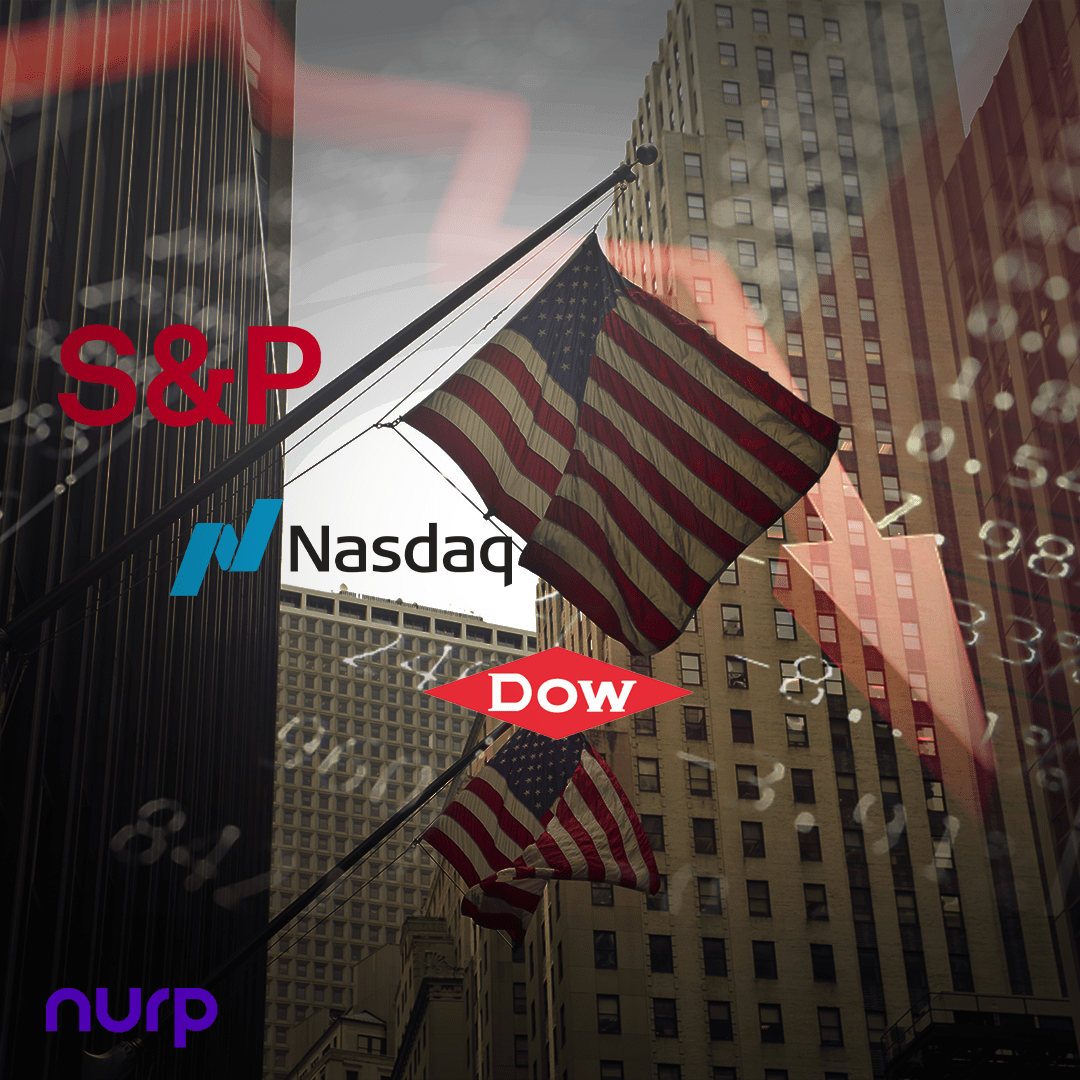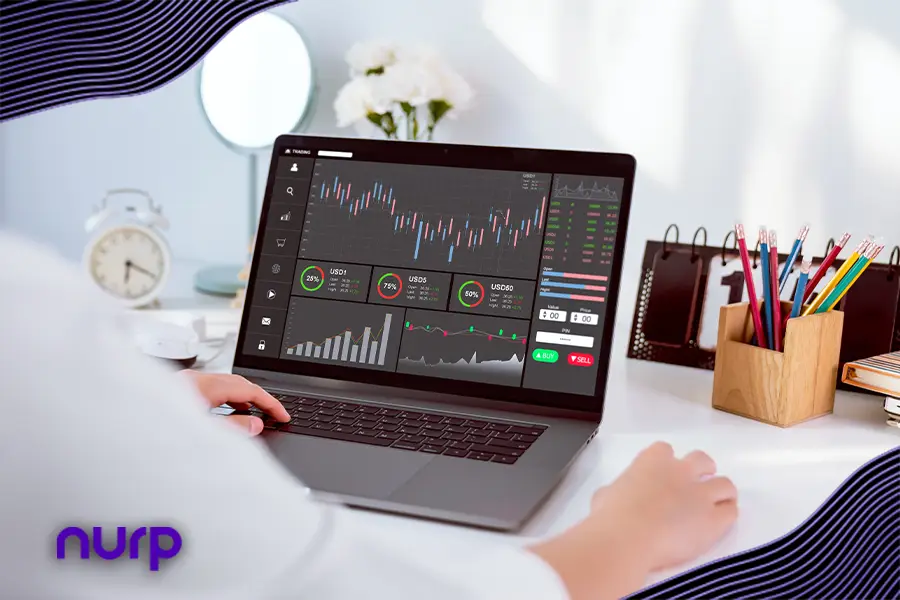The US dollar is taking a massive hit, seeing lows that we have not seen since December 2023. In this video, I want to go over where the dollar is headed and what is actively happening with my open trades against or alongside the dollar. Without further ado, let’s get right to it.
Welcome back! If you’re new to the channel, my name is Matt Jimenez. I’m an entrepreneur who has worked with the greatest minds in finance over the last several years, and I’m here to report everything important to me.
Today, I want to go over exactly what I’m looking at in the dollar to track where it’s headed and, more importantly, show you guys exactly what’s going on behind the scenes. Meanwhile, my software is running and taking trades with all this dollar volatility.
Now, with that being said, let’s jump straight to the charts. Here is the dollar index on a weekly chart, and if I just zoom in a tad, you can see the last time we’ve seen any price down in this region was all the way back in December 2023.
I believe a lot of this move is the actual pricing of the premise that we’re having a rate cut for the US dollar. As you can see, the dollar has been completely tumbling in strength since the end of July, when this whole move started. This was back when the Fed experienced all of that volatility.
If I go ahead and grab my measuring tool, let’s see how much it’s already dropped since the end of July. To the current date, we are down 4% so far on the US dollar. As you can see, I drew this trend line down here to show where I thought the dollar was headed. Now, this move here, where we had this bounce, led me to draw this trend line where we can see price action come down and wick right on it. It looked like it was going to be rejected, but that was short-lived because it just left a wick right off the trend line and tumbled right back over.
Now, going ahead and zooming in a bit further on a daily chart, as you can see, the dollar is approaching previous support around 100.780. The reason why I make a rectangle is that with support and resistance lines, it’s never an actual exact number; it’s always a range. So, this rectangle allows me to conceptualize that we are in a range of support.
Another thing that I’m looking for is price to push down into this region here and make its way back up to these moving averages. Whenever we have a move heavily extended away from moving averages, typically, you’ll see price trend back in the direction to come closer to the moving averages.
Now, jumping over to NZD/USD, this is the pair that I have active trades on, and quite a few, to say the least. As you can see, price came down from the top of the wedge and bounced right off previous support, and we popped up over to the moving averages. This purple one right here is the 50 MA, which we tumbled right over, and it sold off quite nicely. Of course, it bounced right at previous support. So, we bounced here, came down, touched again, and now we’re bouncing to the top of this wedge.
Right now, we’re currently meeting this moving average, which typically has some type of interaction with price action. If we wanted to look at that, we would just go ahead and drop down to a smaller time frame to see what is happening in current price action. Because this is a weekly moving average, if I go down to a 1-hour chart, we could see if we are experiencing any type of rejection.
Oddly enough, there is no rejection in that region. Typically, with the higher-numbered moving averages, you’ll see more of the respect, and what I mean by “respect” is a reaction. So, the 50 is the first line of defense, then it would be the 100, and then onward to the 200, which I do not have plotted at the moment.
As I said earlier, I believe that this move is being fueled by the premise of a rate cut for the US dollar. A lot of this move is already priced into the price action. So, when the move does happen, a lot of the price action has already followed the prediction of the cut, which is, of course, bearish for the dollar.
We had really bad employment numbers in the US come out not too long ago. This led to the dollar slumping ahead of pay revisions and Powell’s speech. Jerome Powell is one of the members of the Federal Reserve who helps with monetary and fiscal policies.
In this article, it states that Goldman Sachs economists expect that 600,000 to 1 million fewer jobs were created from April 2023 to March 2024 than previously reported. A downward revision of 1 million jobs would mean that 1.6 million jobs were created in that period, down from the initially reported 2.6 million, said Mack, the Chief Market Strategist.
Now, here is the most important part: the prospect of a weaker labor market is why traders continue to price in a potential 50 basis point cut in September. Chandler said people thought the Fed was behind the curve in raising rates, and now many people think that the Fed is behind the curve in cutting rates.
Traders reduced their bets that the Fed would cut its benchmark overnight interest rate by half a percentage point. Traders reduced bets that the Fed would cut its benchmark overnight interest rate by half a percentage point at its September 17th-18th meeting, following the hotter-than-expected shelter inflation and strong retail sales in July.
So, currently, it is the month of August, and we are just finishing up the month and heading into September, where we’re going to get some pretty important numbers and data back that will bring more volatility for the dollar. But as you can see, traders are already betting and pricing in this potential weak dollar. They’re taking bets and trades, and people are making financial decisions based on this prior to it even coming out. So, a lot of this move is already premeditated and happening.
As you can see, NZD has taken a massive leap to the upside. Of course, it’s bouncing right off support, and ironically, it’s bouncing right off the bottom of this wedge. It just goes to show that a lot of the time, as much as people want to make fun of technicals, they often align with fundamentals, and there’s no disputing that. There are many instances where technicals often validate fundamentals.
As you can see again, let’s just look at the dollar one more time. We are heading down to extreme lows prior to all of this news coming out. If I were to just click this, it would show the latest updates on potential news coming out regarding the dollar and a bunch of other suggestions on what people are seeing in the dollar.
Enough of that. Let’s pull up my dashboard and see how it is doing during all of this volatility, especially with the NZD pair. Here is my dashboard. As you can see, there is currently $10,486 in this algorithm. I started it with $9,954.
Now, it’s very important for me to understand what I am looking at here, and what I’m looking at are all open trades. The reason why I bring this up is because I’m taking a note from my previous mistake with the Fedbot. Of course, none of this is ever financial advice before I get into it. With that being said, this is merely just for your entertainment.
Now, what I took away from the Fedbot experience was that I need to understand my margin levels. The margin level is basically how much capital I have available to take more positions. That’s it, in layman’s terms.
Now, typically, with this number at 1,600% margin, that is relatively safe for my liking. If I go down below 1,000%, I would probably come up to this button right here and go ahead and click it. This will turn off algo trading. The reason why I would do this is because it will actually stop the software from taking on more positions.
Now, remember what I said about margin – the more margin that is available, the more trades the software can take.
So, if I turn off auto trading, it disables the software’s ability to take on more trades. More trades mean lower margin. Each time you take on a new trade, you’re lowering that margin. So, if I dip below 1,000 here, which I’m going to be watching pretty actively, I’m going to turn off the trades. That way, the algorithm does not take on more trades and will just manage the ones that are currently open.
Let’s go ahead and look at NZD/USD and show you exactly what I am currently in. All these green lines are open positions, and the green lines represent my entry—where the software actually took its trade. As you can see, I have multiple trades open.
What I’m looking for here is to get some type of reaction to the news that will give me some relief on the buy pressure of this pair. If I pop back over to TradingView and I go to the DXY, I can see the dollar news that is coming out. I have an FOMC meeting tomorrow, and then I also have a speech from Jerome Powell later this week.
Now, I believe just those two things alone, depending on how they go and what is said, can actually cause this pair to come down further into support and have some type of reaction to the news, even though the technicals are showing that’s where price would typically go and have some reaction.
Zooming out a bit, I believe that this chart will find some type of relief bounce from the news. I shot this video to give you guys some prior knowledge as to what’s going on with the US dollar. As you can see, we have a lot of news coming up that is already pricing in tons of volatility for the US dollar.
I also wanted to show you guys what my algorithm is doing, what it looks like, and what I will be doing with it. One thing I wanted to mention is that my algorithm already has a built-in 15% stop loss. So, regardless of the worst-case scenario, I only lose 15%, and the story goes on. The algorithm keeps trading, and I potentially recoup it.
That’s the beauty of a stop loss: I no longer have the vulnerability of having my account take a loss I can’t afford. No one should ever be in a position where they take a loss they can’t afford because that’s the one thing you can actually control—how much you lose. With that being said, I have stop losses in place, and I’m monitoring my free margin to decide when or if I should even turn off my auto trading.
For now, I’m just sitting back, waiting for the news to happen, and seeing if I can get some type of dollar strength to drop this NZD/USD pair. Right now, the New Zealand dollar is strengthening a lot because the US dollar is weakening. Obviously, the chart going up is showing NZD strength while also highlighting dollar weakness.
I’m looking for some type of pullback on the NZD, and I think we may experience it—worst case—up at this moving average area, to come back down. There’s also resistance right here, so worst-case scenario, we pull up into this area, and there is some type of reaction back down to alleviate some of those positions, but also give me tons of profits because I’m so heavily sized in on the top end of this move. I think I’ll make some pretty good profits if this thing does reverse here.
Nonetheless, I wanted to give you guys a quick update, and I want to do this a little bit more often to show you what I’m looking at and what I’m doing during these trades when the software has scaled in a bunch.
If you enjoyed this video, please leave a like or comment, and like always, my friends – peace.
To watch the full video on YouTube, please visit Trading Algo Live During Volatile Market
The post Trading Algo Live During Volatile Market first appeared on Nurp.com.







